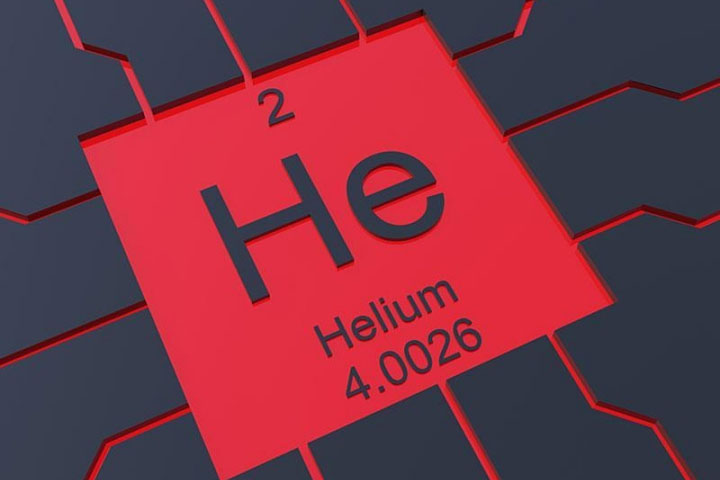How was Helium gas generated?
If you pump Helium gas into the balloon and release them, this ball will fly to a maximum height of under 10km. At that time, the ball will be broken due to atmospheric pressure and the certainty of the ball surface is no longer sufficient to withstand the pressure of the gas inside it.
Helium (Helium) is released lighter than other gases in the atmosphere, so it continues to fly out into space. That is why only a helium amount of about 0.0005% exists in the atmosphere.
Helium exists a lot in space. The reason is because it is a product in the fusion process inside stars, such as the sun. However, helium gas on Earth appears under a different process. Deep inside the Earth, radioactive elements such as Uranium (Uranium) or Thorium (Thorium) decay and turn into other elements. The byproducts of these reactions are alpha particles (abbreviated to a) , composed of two neutrons (neutrons) and 2 protons (protons). These particles collect electrons from their surroundings and convert to helium gas. They will gradually fly out of the Earth's crust and survive in the atmosphere. After that, they continue to fly up into space.

Helium exists a lot in space.
Helium gas is also a natural gas that oil and gas drilling machines extract from the ground for use as fuel. Not only is this gas a source of balloons, but it is also used in many other industrial processes, ranging from arc welding to magnetic resonance imaging (MRI - Magnetic Resonance Imaging) or even is manufacturing silicon chips for computers.
Helium occupies only a very small amount in natural gas, at least 0.3% by volume. This is a proof that separating it from natural gas compounds is quite troublesome. To do this, industrial processes must be performed to filter other impurities, such as water, Carbon Dioxide or Hydrogen Sulfide, from gases. Eventually, they continue to undergo a freezing process to cool the gas and remove methane that makes up the majority of it. Since then, we have a raw helium gas with about 50 to 70% pure, the rest of which is a small amount of Argon, Neon and Hydrogen (Hidro) gas. After that, raw helium will be refined through another filtration and cooling process to achieve a pure ratio of up to 99%.
The problem is that there are not many helium-containing gas fields in it, and helium extraction is difficult to achieve the desired effect as well as the cost to implement and most of them come from several sources. , including the US National Heli Reserve. The need for helium in nature is numerous but they are not enough for those needs.
- Many Helium gas mines were discovered with huge reserves, not worried about exhausting energy
- Scientists have just created a stable helium compound
- Discover the world's largest helium mine
- Mysterious giant planet with a helium trail behind
- Superheated helium balloons,
- Heli 3 - Fusion energy for the future
- The time box is about to open after half a century
- The US Navy piloted a self-generated energy system at sea
- Discover an ancient diamond warehouse near the Earth's core
- The land on the moon can energize the future
- Chinese ambition monopoly moon resources
- Aerospace tourism near space
 'Fine laughs' - Scary and painful torture in ancient times
'Fine laughs' - Scary and painful torture in ancient times The sequence of numbers 142857 of the Egyptian pyramids is known as the strangest number in the world - Why?
The sequence of numbers 142857 of the Egyptian pyramids is known as the strangest number in the world - Why? What is alum?
What is alum? Miracle behind the world's largest stone Buddha statue
Miracle behind the world's largest stone Buddha statue